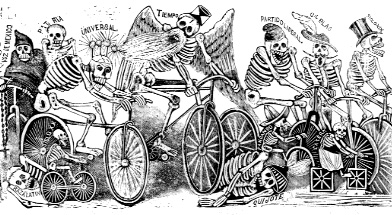Trailer
http://vimeo.com/25711966
A
film review of “Jack & Chuck”
by
Alexandre Chaudret, Themoas Crepin and Maureen Kressmann
This past summer I had the chance to be a
student volunteer at Siggraph in Los Angeles, and part of the program of the
conference is the Electronic Theatre, a film exhibition where studios, schools
and film makers from around the world have the opportunity to showcase their
films to the Siggraph attendees. I only had the chance to watch part of the
exhibition but a film caught my attention, even though I couldn’t see it
entirely. I remembered the mood of the film, the characters, the music and the
end of the story, which is what I saw at Siggraph, but I didn’t know the name
of the film. After searching on the internet for it I found it and I found the
blog of one of the film makers who was kind enough to reply to my e-mail and
allow me to see the entire film. I had high expectations because of the
impression it made on me the fraction of it that I saw in Los Angeles, and it
definitely met those expectations.
The film is about a writer, Chuck, who has
no arms and uses his mouth and a pencil to write on a typewriter, but he has a
lot of struggles and every time he fails at his writing he rips the piece of
paper off with his mouth and drinks from a bottle of Jack Daniels on his desk
with the help of a straw. As he struggles in his writing, a second character
comes to visit him. This character is a big and charismatic person called Jack,
who is a salesman and comes to offer the writer a pair of metal arms and hands
to help him write, but the offer is not in exchange of money, but instead Chuck
has to give his tongue to keep the arms. Chuck agrees after a lot of thinking
and Jack cuts his tongue off.
The film made a big impression on me,
mainly because of its visual style, a very grotesque and black and white
environment, with very strong lighting and organic characters. The story also
seemed very original and strong to me, and the story telling of it was very
solid, delivered through dialogue and strong acting from both characters. The
music added a comedic and dramatic sense to it, being a country genre with
vocals.
The other aspect of the film that impressed
me and inspired me was the fact that students, from the Supinfocom Animation
College in France, produced it. Three of them collaborated on the project for
one year and they had a very successful acceptance from festivals and
audiences. This inspired me because they were in a situation similar to mine at
the moment, being students with responsibilities beyond the film, but they
still managed to have a big and successful project by overcoming those
obstacles, and made me realize that I might be able to do something similar.
The film also pushed the style of my grad
film, because before watching Jack and Chuck I had rough ideas of what I wanted
my film to look like, but I hadn’t found something that communicated me that
feeling and this film did. The visuals are very appealing and the environment
is simple but very interesting, as well as the characters.
The film, beyond being an original and
interesting story, taught me the outcomes that hard work and team collaboration
can achieve, and Alexandre Chaudret, the film maker that answered my e-mail, encouraged
me to keep working on my ideas even though if they seem big, and he also told
me that I would encounter a lot of obstacles, both technical and artistic
during the production of my film, but that relying on your peer is one of the
best ways to keep going on the right path.
Fernando Ortega





























.jpg)



